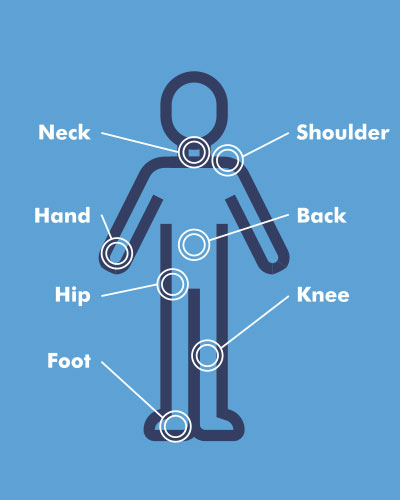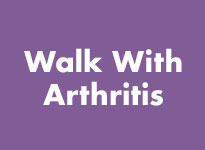What is Osteoarthritis?
Basic information about osteoarthritis (OA)
Osteoarthritis (OA) (AH-stee-oh-ar-THREYE-tis) is the most common type of arthritis, especially among older people. OA symptoms vary by the individual. For most people, OA can get worse over time if you don’t address the pain and symptoms now.
What is OA? Osteoarthritis mostly affects cartilage (KAR-til-uj). The surface layer of cartilage breaks down and wears away. This allows bones under the cartilage to rub together, causing pain, swelling, and loss of motion of the joint. Over time, these changes can affect the bones, tendons, and other joint issues.
Joint pain is common, but you shouldn’t have to “just live” with pain. There are many ways to reduce joint pain so you can stay active your entire life.
What Are Some of the Causes of OA? Risk factors or causes of OA include aging, excess body weight, a prior joint injury, being female, genetics, and excessive/repetitive movement from certain jobs or sports.
Learn more about OA causes
What Are the Signs and Symptoms of OA?
- Joint pain typically in the hands, knees, feet, neck, hips, and spine
- Several minutes of stiffness in a joint after getting out of bed or sitting for a long time
- Mild swelling or tenderness in one or more joints
What is the Difference Between OA and RA? Rheumatoid arthritis (RA) affects far fewer people than OA. RA is an autoimmune disease in which the body’s immune system attacks its tissues, including joints. As compared to RA, OA affects only the joints, which causes changes to a joint’s cartilage, shape, and movement.
How is Osteoarthritis Treated?
There is no cure for arthritis – however, joint pain and OA symptoms can be managed through treatment, lifestyle changes, and education.
Make an appointment with your healthcare provider and use the Talking With My Provider Worksheet (p.2) to get you moving on a path to less joint pain.
Your doctor might recommend a combination of treatments to fit your needs, lifestyle, and health.
- Improve joint function through exercise such as walking
- Keep a healthy body weight
- Over-the-counter and prescription medications
- Non-drug pain relief techniques to control pain
- Rest and joint care
- Complementary and alternative therapies
- Surgery
Take Steps to Learn About OA
At the OA Action Alliance, we are believers in evidence-based management strategies related to physical activity, weight management, injury prevention, and self-management education. But we know that people with arthritis have many more treatment options.
Learn more from our partner organizations about how you can take action to improve your arthritis pain, daily function, and overall well-being.
- Arthritis Foundation: Arthritis Treatment Options– Treatment success comes from a combination of understanding your treatment plan with your doctor and exploring arthritis medication, joint surgery, and natural arthritis treatments if and when they are right for you.
- American College of Rheumatology: Treatments – Search for rheumatic diseases alphabetically for background information on some of the most common medications and therapies used to treat these diseases, such as how they work, common dosages, safety tips, possible side effects, risks, and things you should discuss with your healthcare providers if you are taking or considering these treatments.
- American Chronic Pain Association: Medications and Treatment – Medications and treatments, along with pain management techniques like relaxation, pacing, and exercise, can play a big role in reducing pain and improving quality of life.
- CDC: Arthritis Types: Osteoarthritis (OA) – Find in-depth information from the Centers for Disease Control.
- Cleveland Clinic – Includes steps that might ease symptoms and potentially slow the progression of knee arthritis
- National Institute of Arthritis and Musculoskeletal and Skin Diseases – Learn more from the National Institute of Health.
Explore More











